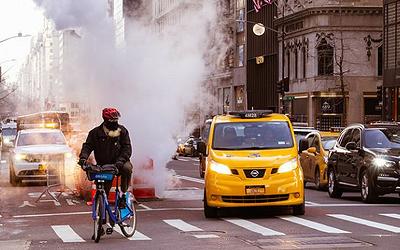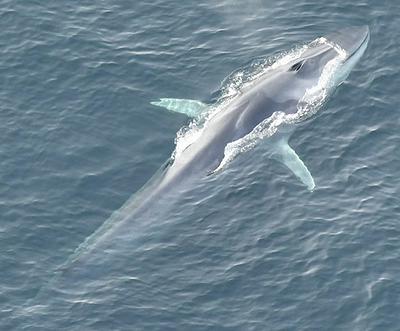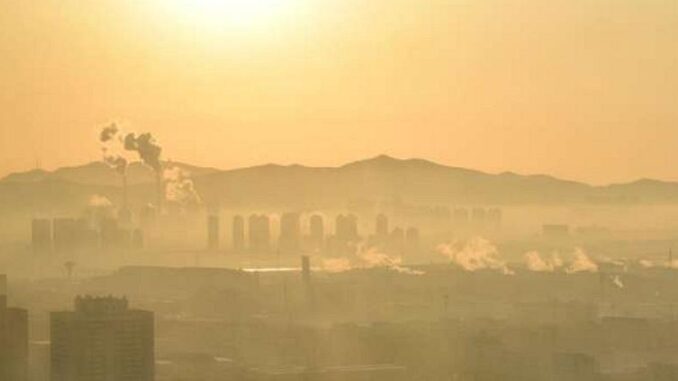
DENVER, Colorado, February 23, 2024 (ENS) – Colorado’s Democratic state legislators rolled out an forceful group of three bills aimed at eliminating ozone pollution on the state’s Front Range, some of the worst in the country, by targeting the oil and gas industry.
Three bills to address Colorado’s permitting, enforcement, and pollution reduction processes that have allowed the state’s ozone pollution crisis to worsen were introduced on Thursday. The bills build on the work of the 2023 legislative interim committee on ozone, which gathered stakeholders from across the state to identify priority legislative solutions for Colorado’s air quality problem.
There are multiple sources of air pollution in Colorado, such as factories, vehicles, buildings, homes and fossil fuel power generators, such as coal-fired power plants.
The Comanche 3 coal unit is located in Pueblo, a majority low-income, Latino community that gets its electricity from a utility called Black Hills Energy. So, while Xcel pollutes the Pueblo community with nitrogen oxide and sulfur dioxide, local residents don’t get electricity from the coal plant. Instead, the power is exported to whiter communities served by Xcel on Colorado’s Front Range.
Xcel Energy, responding to pressure from state regulators and clean air advocates, in 2022 offered to close Comanche 3 by 2031, putting a period to coal-fired electricity generation in Colorado.
The package of three bills introduced February 22 includes tougher enforcement for air pollution violations, additional permitting steps for new sources of air pollution and new air quality improvement regulations that would limit oil and gas production during the summer ozone months.
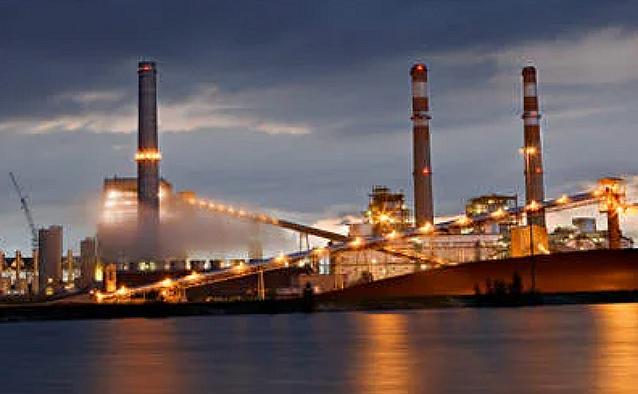
It directs the Colorado Department of Transportation to implement a program that would reduce driving along the 300 mile-long (500 km) Front Range, the easternmost section of the southern Rocky Mountains.
Xcel Energy’s Comanche 3 coal unit is Colorado’s largest coal unit at 750 megawatts (MW) of generating capacity. In 2021, Comanche 3 emitted 4.2 million tons of the greenhouse gas carbon dioxide (CO2) into the atmosphere, making it Colorado’s largest source of carbon dioxide emissions.
The first bill, introduced by Senators Kevin Priola and Lisa Cutter and Representatives Manny Rutinel and Lorena Garcia, focuses on pollution reduction measures to help bring the Front Range into compliance with the Clean Air Act.
On or before December 31, 2025, the Air Quality Control Commission, AQCC, must adopt rules for controlling emissions from facilities, buildings, structures, installations, or real property that generates mobile source activity that results in emissions of air pollutants within the eight-hour ozone Denver metro/north front range nonattainment area, considered a covered nonattainment area.
The rules must include emission reduction targets for indirect sources to achieve and a process for the division of administration in the department to review alternative approaches proposed by an owner or operator of an indirect source. The commission may establish a fee for indirect sources within the covered nonattainment area to cover the division’s costs in implementing the rules.
The second bill, introduced by Representatives Jennifer Bacon and Jenny Willford, addresses Colorado’s broken air quality permitting process that has allowed new sources to pollute Colorado’s air while the region is already in violation of federal ozone air quality standards.
The third bill, introduced by Senator Faith Winter and Representatives Meg Froelich and Elizabeth Velasco, focuses on strengthening enforcement of air quality regulations and holding polluters accountable for polluting our air and harming our health.
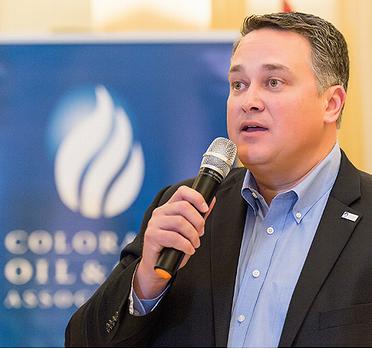
The Colorado Oil & Gas Association, with support from business groups, sent a letter to Governor Jared Polis and state legislative leaders, urging them to oppose the proposed bills.
“We will fight each of these bills, and we intend to explore every available path forward to protect Coloradans from these efforts, which if successful will raise energy costs on those who can least afford it,” said Dan Haley, president and CEO of the Colorado Oil & Gas Association, said.
Public interest clean air advocate Kirsten Schatz with the nonprofit Colorado Public Interest Research Group, CoPIRG, says doing nothing to address Colorado’s air quality, which for years has been below federal standards, will come at its own cost.
“There’s a cost to our health. There’s a cost to our quality-of-life kids, who are experiencing asthma attacks and are struggling to breathe,” Schatz said. “Missed days of work, missed days of school adds up to a huge cost to the state.”
Ozone pollution can cause serious health problems including shortness of breath, asthma attacks, decreased lung function, increased risk of respiratory infections, and aggravated lung diseases.
Studies have linked lower birth weight in newborns to ozone levels in their communities. Low-income communities and communities of color are overwhelmingly impacted by poor air quality, leading to increased health risks, higher healthcare costs, and missed days of school and work.
Back in 2017, a comprehensive air quality report for Colorado quantified the sources of summertime ozone in Denver and the northern Front Range, revealing the extent to which motor vehicles and oil and gas operations are the two largest local contributors to the pollutant.
“We found that, on high ozone days, a critical portion of the ozone pollution here on the Front Range is the result of local activities, especially traffic and oil and gas operations,” said scientist Gabriele Pfister with the National Center for Atmospheric Research, NCAR, an author of the report. “The pollution doesn’t just affect the metro area. Prevailing daytime winds often transport the ozone to the west, exposing the foothills and mountains to high ozone levels.”

“Generations of disproportionately impacted communities deserve to finally be respected and validated for their sacrifice on the frontlines of environmental racism and degradation with the enforceable protections these bills finally address,” said Renée Chacon, cofounder of the nonprofit Womxn from the Mountain.
“However, this is just the beginning to addressing equity for DIC and holding predatory industries accountable to the cumulative impacts of harms to the air, water, land, and people, that has been their legacy on Black, Indigenous, and people of color, BIPOC, and disproportionately impacted, DI, communities. May we learn from the past going forward,” Chacon said.
Guadalupe Solís, director of environmental justice programs at the Hispanic health nonprofit Cultivando, said, “As they stand, Colorado air quality laws and regulations do not protect public health and wellbeing. Communities in Commerce City and North Denver know we cannot rely on existing laws and regulations to enforce the law and bring true accountability to polluters. We need the support of bold and compassionate legislators to ensure that industry cannot continue to repeatedly pay their way across violating the law.”
“Black communities across Colorado, enduring disproportionate impacts amidst the state’s ozone challenges, demand overdue recognition and protection against environmental racism,” said Portia Prescott, president of the nonprofit Rocky Mountain National Association for the Advancement of Colored People CO-MT-WY.

“Nurses across Colorado’s Front Range are perpetually alarmed by the frequency and severity of poor air quality and its impacts on the health of our communities,” said Dr. Darci Martinez, a doctor of nursing practice and immediate past president of the National Alliance of Hispanic Nurses Denver Chapter. “The need to act on ozone is critical, especially for communities of color, who disproportionately bear the burden of health-harming emissions and other climate impacts.”
“Passing these bills would be a significant step toward addressing Colorado’s ozone crisis,” said Rebecca Curry, policy advocate for Earthjustice’s Rocky Mountain Office in Denver. “Communities continue to suffer because our worst polluters are not being held accountable. The legislature must take meaningful steps to address our broken polluter permitting system, strengthen the enforcement of air quality regulations, and reduce fossil fuel emissions.”
This is not the first attempt to clear the air over Colorado’s Front Range. In September 2022, the U.S. Environmental Protection Agency reclassified Denver and Colorado’s northern Front Range as “severe” violators of federal air quality standards.
The “severe” label requires motorists to use a special blend of gasoline in summer that reduces harmful greenhouse gas emissions. Drivers in the nine-county northern Front Range will begin using it in the summer of 2024 unless the state convinces the EPA to grant an exception. The driver-service organization AAA estimates gas prices will increase 20 to 30 cents per gallon once drivers start using it.
Xcel has already announced the closure of four coal-fired units between 2022 and 2028 at its Pueblo and Hayden generating stations, ending a total of 1,200 megawatts (MW) of generating capacity.
The lost electricity generation will be replaced, under Xcel’s plan, with 2,400 MW of wind generation, 1,600 MW of utility-scale solar and 400 MW of energy storage.
The company’s only other coal-fired plant, Pawnee Generating Station near Fort Morgan, will be converted to natural gas by 2025.
Featured image: Air pollution over Denver, Colorado is illuminated by the rising sun. September 2022 (Photo in the Public Domain via Pixabay)

